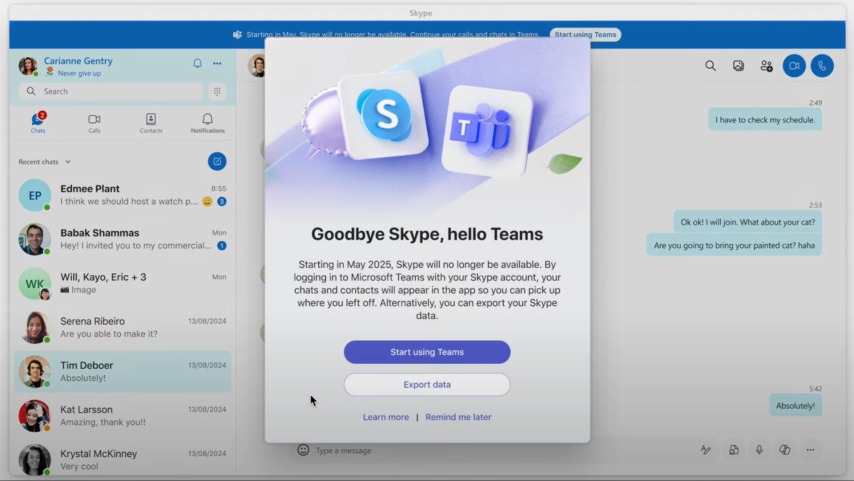“We know this is a big deal for our Skype users, and we’re very grateful for their support of Skype and all the learnings that have factored into Teams over the last seven years,” Microsoft 365 collaborative apps and platforms president Jeff Teper told TechCrunch. “At this point, putting all our focus behind Teams will let us give a simpler message and drive faster innovation.”
As TechCrunch notes, it’s unclear how many users will be affected by the change. At its peak, Skype had 300 million users; as of 2023, Microsoft reported only 36 million users. Microsoft launched Teams in 2016, and efforts to modernize Skype in the 2010s largely seemed fruitless. In 2015, the company added Mojis, which essentially enabled users to send the kind of reaction videos that eventually took over Twitter years later. The same year, Microsoft launched a Skype For Business package, which was already being phased out by 2017.
Though many users likely already made the switch to Teams or Google Meet or Zoom or simply the FaceTime built into their various Apple devices, it felt as though Skype would always be in our docks, like a cassette tape gathering dust. But this is the cut-throat world of business, and Microsoft cares not about our nostalgia for various apps and digital ephemera from years yester. Hug your Skype close while you can; in just over two months time, it will join Microsoft’s Internet Explorer in the digital graveyard.









































